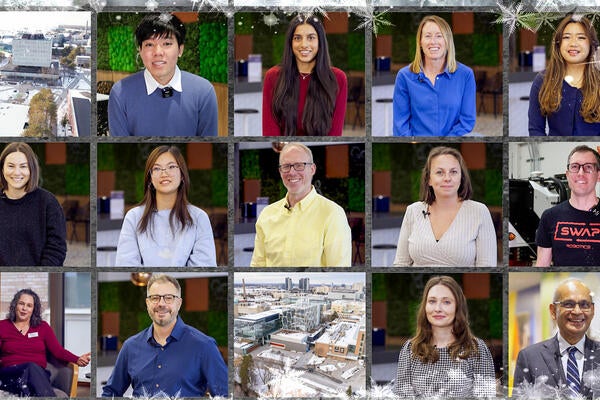
Cultural videos spark conversations
Chérisse Mike (BA ’17) uses her creative talents to tackle assumptions about Africa and the Caribbean.

Chérisse Mike (BA ’17) uses her creative talents to tackle assumptions about Africa and the Caribbean.
By Claire Mastrangelo Office of AdvancementChérisse Mike (BA ’17) set out to address cultural misconceptions at Waterloo. Now, her message is rippling out across North America.
“Since I moved here from Trinidad, I’ve found that the entire Caribbean, or all black people, are often grouped together,” she says. “That can be harmful to people who are proud of their identity.”
Chérisse came to Waterloo as an international student, and now works full time at the University. She knows that stereotypes can make it hard for students from different cultures to get to know one another. When she saw an announcement for Waterloo’s new Internationalization Fund — which supports projects that infuse global perspectives into the University’s activities — she knew exactly what she wanted to do.
“I’d seen a Buzzfeed video about people who were ‘black, but’ or ‘black, and,’ and I thought it would be really good to have such a thing for culture,” she says. “I wanted it to be lighthearted — a conversation starter.”
She submitted a proposal and received funding for two videos: one featuring Caribbean students and one featuring African students. Then she conducted focus groups with members of the Association of Caribbean Students (ACS), the Black Association for Student Expression (BASE) and the African Student Association (ASA) — groups she’d been heavily involved in as a student. She invited some of the participants to appear in her videos, and worked with colleagues from Renison University College and the Student Success Office to write the script. A member of Waterloo’s Creative Services team helped to capture and edit the footage.
“It was a lot of hard work, and it took longer than I expected,” she says, “but in the end, it was exactly what I wanted.”
“Everybody who was part of the project was really pleased with how it turned out,” adds Chérisse. “I’m so happy that I did it, because it showed me that there are people on campus who want their voices heard.”
Chérisse has since presented her work to staff across Waterloo’s campuses. She’s also received inquiries from Canadian and American schools that want to create their own versions of the videos.
“I would be really happy if other cultural groups took the pattern I created and made it their own,” she says. “I hope it motivates people to reach out and learn from each other. I think a lot of people are willing to share their experiences if you just ask.”

Read more
A winter holiday message from President Vivek Goel

Read more
Researchers awarded funding to investigate ecology, climate change, repatriation, health and well-being through cultural and historical lens

Read more
Shop Canadian this holiday season with festive porch plants, fashion-forward apparel, craft spirits and more from Waterloo entrepreneurs
The University of Waterloo acknowledges that much of our work takes place on the traditional territory of the Neutral, Anishinaabeg, and Haudenosaunee peoples. Our main campus is situated on the Haldimand Tract, the land granted to the Six Nations that includes six miles on each side of the Grand River. Our active work toward reconciliation takes place across our campuses through research, learning, teaching, and community building, and is co-ordinated within the Office of Indigenous Relations.